TL;DR
Fast answer: In a rented yard with landscape fabric and gravel, the least effort is to weed once, top with 2–3 inches of mulch or decomposed granite, cluster drought‑tolerant pots by the entry, and add solar path lights—skip lawn installs and heavy regrading. Use ReimagineHome.ai to preview mulch color, planter groupings, and simple hardscaping layouts on a photo of your space before you spend a dollar.
3–4 weekend hours: A renter’s guide to making a gravel yard look intentional

Low-effort rental yards combine gravel, mulch, and container plants for easy care and visual interest.
At a Glance - Effort: 3–4 hours the first weekend, then 15–20 minutes monthly - Budget: $0–$350 (free chip‑drop mulch to purchased mulch/DG, plus a few planters and solar lights) - Water: 30–60% savings vs. lawn when you choose mulch, DG, and drought‑tolerant pots - Look: Clean, intentional xeriscape with curb appeal and minimal maintenance Try your own layout, furniture style, or celebrity-inspired room transformation on a photo of your space in ReimagineHome.ai. Title: Low‑Effort Landscaping Ideas for Rentals — See Gravel, Mulch, and Xeriscape Options in ReimagineHome.ai Subtitle: Renters want curb appeal without watering bills or weekend marathons. Here’s how to make a gravel yard in Northern California look intentional, low‑maintenance, and drought‑smart. If you’re renting a Northern California home with landscape fabric under gravel, the smartest low‑effort move is to embrace hardscaping design that looks tidy year‑round and sips water. Think 2–3 inches of fresh mulch or decomposed granite (DG), grouped planters with native or Mediterranean plants, and a few pathway ideas lit by warm solar stakes. It’s landscaping that reads finished without fighting the site. A homeowner in Oakland once told me she “just wanted it to look like someone cared.” She raked, topped the old gravel with mulch, set three waist‑high planters near the entry, and added four solar lights. It cost under $250 and took a Saturday. The yard went from neglected to purposeful—no sprinkler schedule required.
30–60% water savings: Why drought‑smart landscaping beats quick lawn fixes in Northern California

Drought-smart landscaping cuts water use 30–60% compared to thirsty lawns in Northern California.
Most NorCal cities now incentivize water‑wise front yard design, and utility data frequently shows 30–60% lower outdoor water use when lawns are replaced with mulch, DG, and drought‑tolerant plants. In a rental—especially one already capped with fabric and rock—chasing a lush lawn is the most effort for the least reward. Growing grass over gravel often demands 4–6 inches of new topsoil, regular irrigation, and seasonal weed control; it’s a sunk cost you can’t pack when you move. Xeric landscaping ideas are easier: refresh the top layer, concentrate green where you see it (by the door, along a path), and keep the rest tidy and permeable. For inspiring, on‑trend curb appeal, scan through ReimagineHome.ai’s overview of 2025 outdoor themes; it shows how muted stone, warm wood accents, and layered planting create modern curb appeal without high maintenance. For a deeper dive into practical, drought‑smart planting and groundcovers you can actually keep alive, see this guide to eco‑friendly, low‑maintenance landscaping you can visualize first in ReimagineHome.ai. - Why this works: Mulch at 2–3 inches suppresses most weeds by up to ~90% and protects the buried fabric, DG compacts into a clean walking surface, and container plants offer color without committing to in‑ground irrigation. - What to skip: Broad chemical sprays or hasty lawn seeding over rock—both are short‑lived wins that create long‑term mess in a rental.
Anecdote
A homeowner in Los Angeles turned a narrow side yard into a cinematic, stone‑lined walkway by tamping DG, spacing three pavers for rhythm, and lighting the plant silhouettes at 2700 K. The whole thing cost less than a single month of lawn watering.
5 renter‑friendly landscaping and hardscaping ideas that clean up gravel yards fast
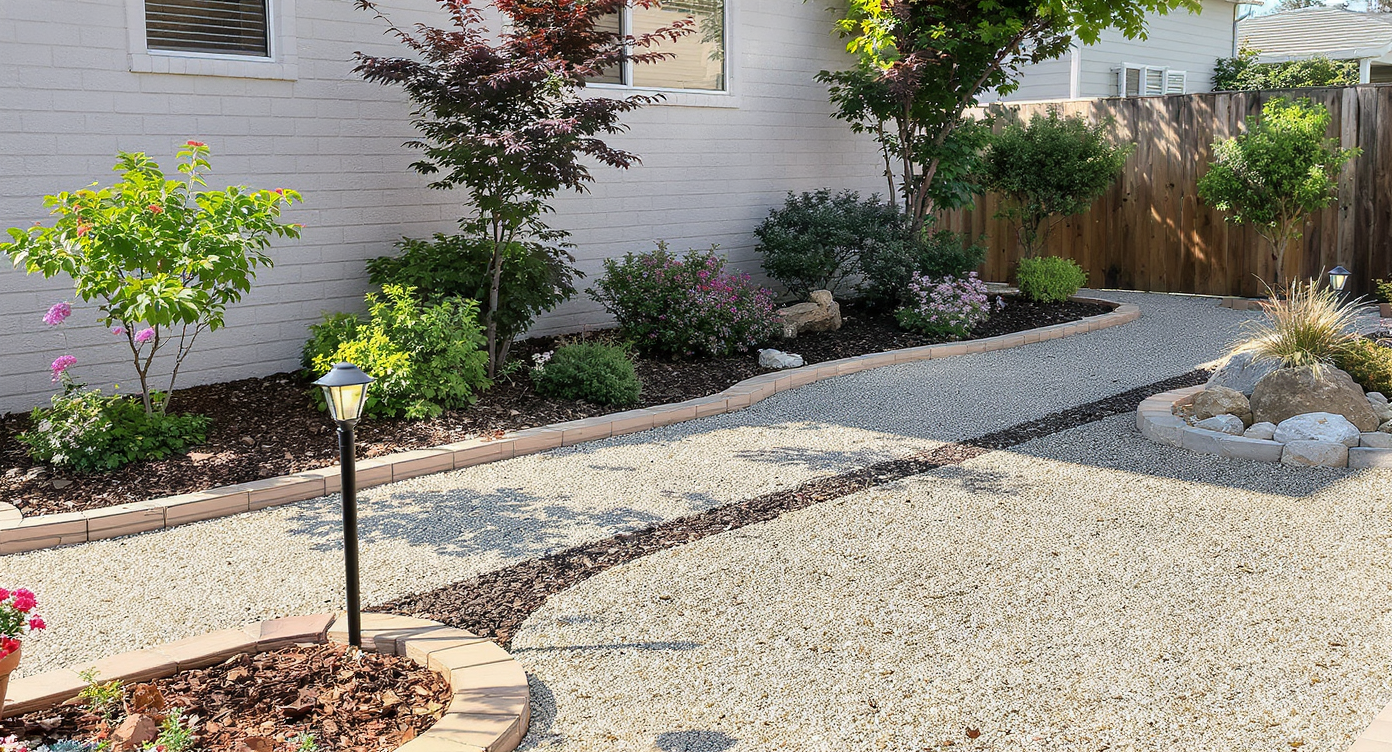
Five renter-friendly elements tidy up gravel yards fast with mulch, containers, pathways, and lighting.
Here are five landscaping ideas that read as intentional hardscaping design with very little effort. 1) 2–3 inches of mulch: Rake smooth, then add a fresh 2–3‑inch layer of shredded bark or chipped wood. It neutralizes the patchy look, protects the fabric, and costs $0–$150 if you score a free local chip drop. 2) 1–2 tons of decomposed granite (DG): For areas you’ll walk, add 2 inches of DG over fabric, wet, and tamp. It creates a neat, compact surface and pairs well with stone patio edges or stepping stones. 3) 3–5 large planters near the entry: Use 18–24‑inch pots with a water‑wise mix—olive, rosemary, lavender, manzanita, ceanothus, or dwarf agave. Grouping planters creates a focal “outdoor living” moment without planting the whole yard. 4) 4 warm‑white solar path lights: Outdoor lighting design looks best at 2700–3000 K. A short run of solar stakes can define a walkway and boost nighttime curb appeal. 5) 1 small accent bed: Carve a kidney‑shaped pocket and edge it with found stone. Fill with a sculptural succulent, a boulder, and low gravel mulch—instant modern landscaping with almost zero water. For cross‑checking what’s trendy this year—stone patio tones, privacy planting, and walkway ideas—preview these 2025 landscaping and hardscaping ideas you can see first in ReimagineHome.ai. If you prefer practical, sustainable moves that won’t increase chores, bookmark this eco‑friendly, low‑maintenance landscaping guide and visualize combinations before you lift a rake. Micro‑story: A renter in San Jose inherited a weed‑flecked gravel patch. She layered mulch, added two stock‑tank planters with salvias and thyme, and set a DG ribbon to the gate—done in a day, and the mail carrier noticed.
10‑minute mockups: Use ReimagineHome.ai to test mulch, DG, clover, and container layouts
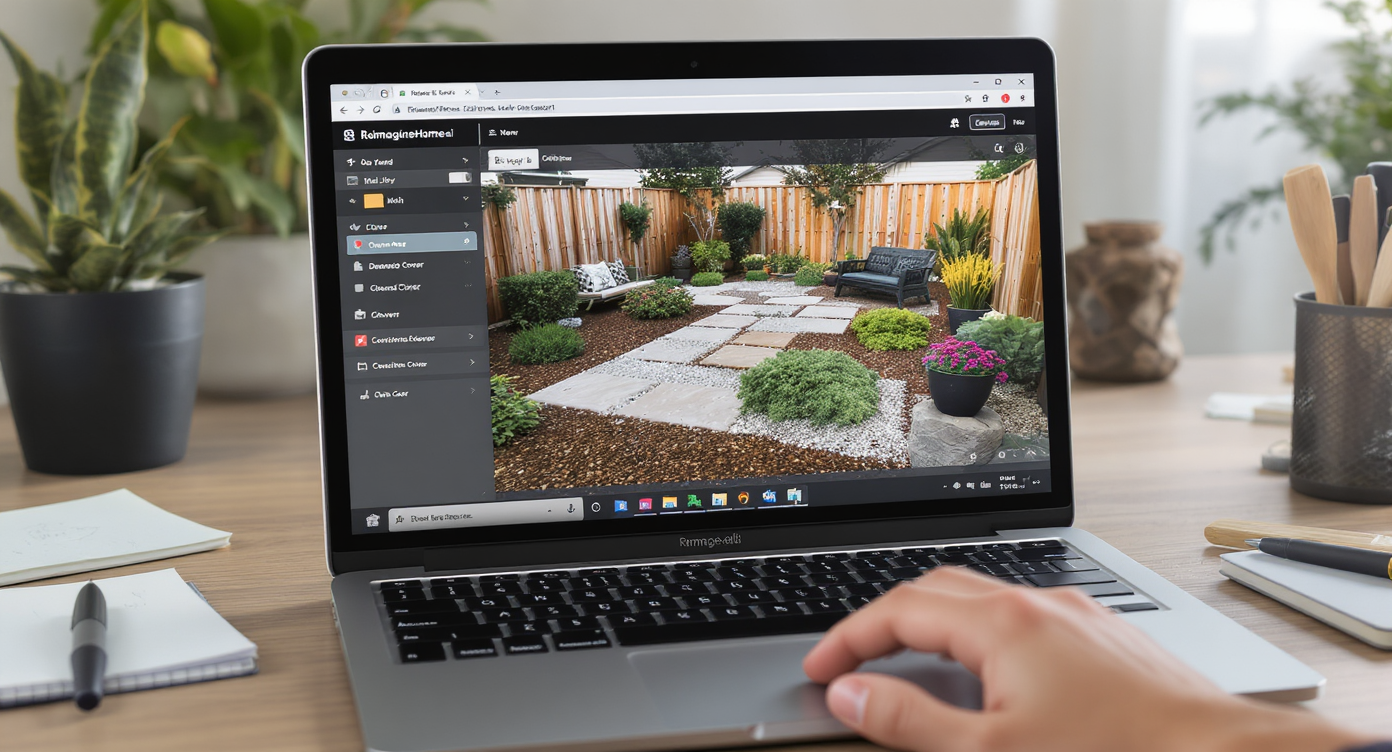
Quick 10-minute mockups with ReimagineHome.ai help test mulch, gravel, and planter layouts before you plant.
You don’t have to guess. Room design AI isn’t just for interiors—ReimagineHome.ai doubles as an AI landscape design tool that reads your exterior photo and generates alternatives in minutes. 1 photo upload: Snap the yard from eye level and upload. 3 variations side‑by‑side: Test mulch vs. DG vs. gravel top‑dress, and see which makes your facade pop. 36–48‑inch paths: Drag in a path to standard widths for easy, code‑sensible circulation. 2 clicks for planters: Place grouped containers by the door and garage to compare focal points. 5–7 planting palettes: Preview native and Mediterranean mixes (lavender, rosemary, ceanothus, manzanita) suited to low water. Pro tip: Use the free AI landscape generator from photo to check color temperature at night—warm 2700–3000 K solar lights flatter stucco and wood. If you’re deciding between “clean DG” or “soft mulch with planters,” load both scenes. The AI yard design view makes it obvious which version looks more intentional with your siding color and driveway lines.
2 quick transformations: From scruffy gravel to clean xeriscape and a pop‑up container garden
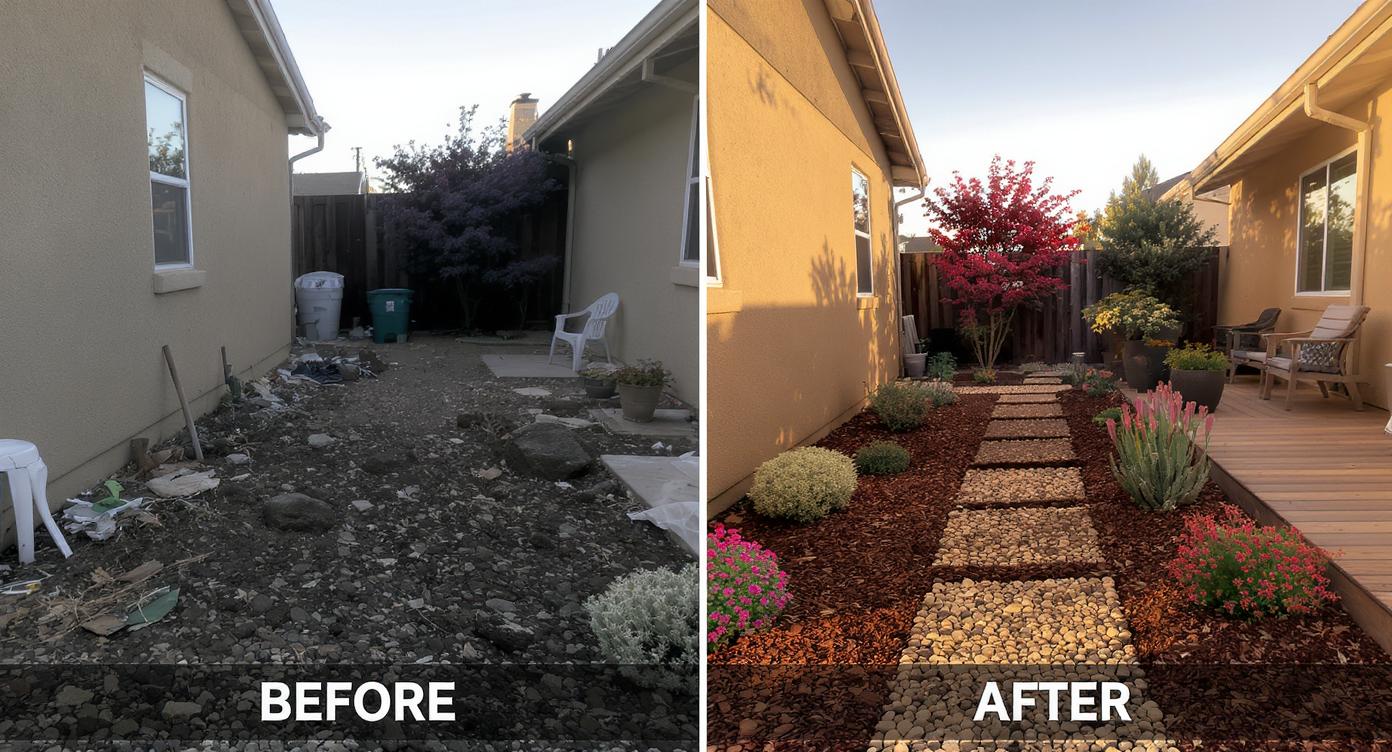
Transform from scruffy gravel to purposeful xeriscape fast with mulch, gravel, and container gardens.
Story 1 — 1 Saturday, ~$220: A narrow side yard in Sacramento got raked, topped with 2 inches of mulch, and edged with six pavers to keep chips tidy. Three 20‑inch planters with rosemary and lavender flanked the hose bib. Four solar stakes at 3000 K defined the path. The space went from utility corridor to a cinematic, stone‑lined walkway. Story 2 — 90 minutes, under $120: A small rental front yard in Oakland added 2 inches of DG from a single bulk bag, tamped with a hand tool, and framed a 3‑foot‑wide path to the porch. One large pot with an olive tree became the hero. Maintenance is 10 minutes a month with a blower set on low.
Visualization Scenario
Upload a straight‑on shot of your gravel yard into ReimagineHome.ai, generate three versions—mulch field with planters, DG path with succulent bed, and mixed gravel with a stone patio edge—and compare nighttime lighting at 2700 K. Choose the scheme that makes your facade and front walk feel intentional from the street.
6 quick answers: Low‑effort landscaping questions, solved
Q1: Can I grow grass over gravel and fabric with minimal effort? A: Not reliably. You’ll usually need 4–6 inches of quality topsoil plus irrigation. In rentals, a 2–3‑inch mulch or DG top‑dress with planters is lower cost, lower effort. Q2: What’s the cheapest way to make a gravel yard look neat fast? A: Rake, weed once, add 2–3 inches of mulch, and cluster 3–5 planters near the entry. Expect $0–$250 depending on mulch source and pot choices. Q3: Is clover a good low‑maintenance lawn substitute in Northern California? A: In sun, micro‑clover can work, but establishing it over gravel/fabric is dicey. Try clover in raised beds or large planters and keep the field as DG or mulch. Q4: How thick should DG or mulch be? A: DG compacts best at ~2 inches over fabric; mulch suppresses weeds at 2–3 inches. Q5: What color temperature is best for outdoor solar lights? A: 2700–3000 K looks warm and architectural, ideal for curb appeal. Q6: How can AI help me pick a layout? A: Use ReimagineHome.ai’s AI landscape generator to preview hardscaping design, walkway ideas, and planter clusters on a photo of your home so you choose once and buy once.
1 photo, dozens of options: Visualize your next outdoor chapter before you spend
One image opens a dozen options. Upload your own yard, compare a stone patio edge to a mulch field, preview privacy planting versus container clusters, and land on the affordable landscaping idea that fits your lease and your weekend bandwidth. Before you rearrange a room or invest in new furniture, explore a celebrity-inspired version of your space in ReimagineHome.ai — a low-risk, high-creativity way to preview ideas before committing in real life.
.svg)

.svg)



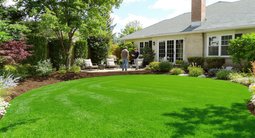
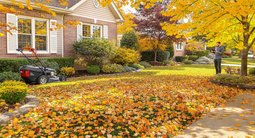


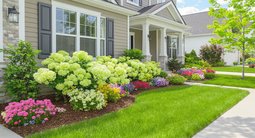






.png)